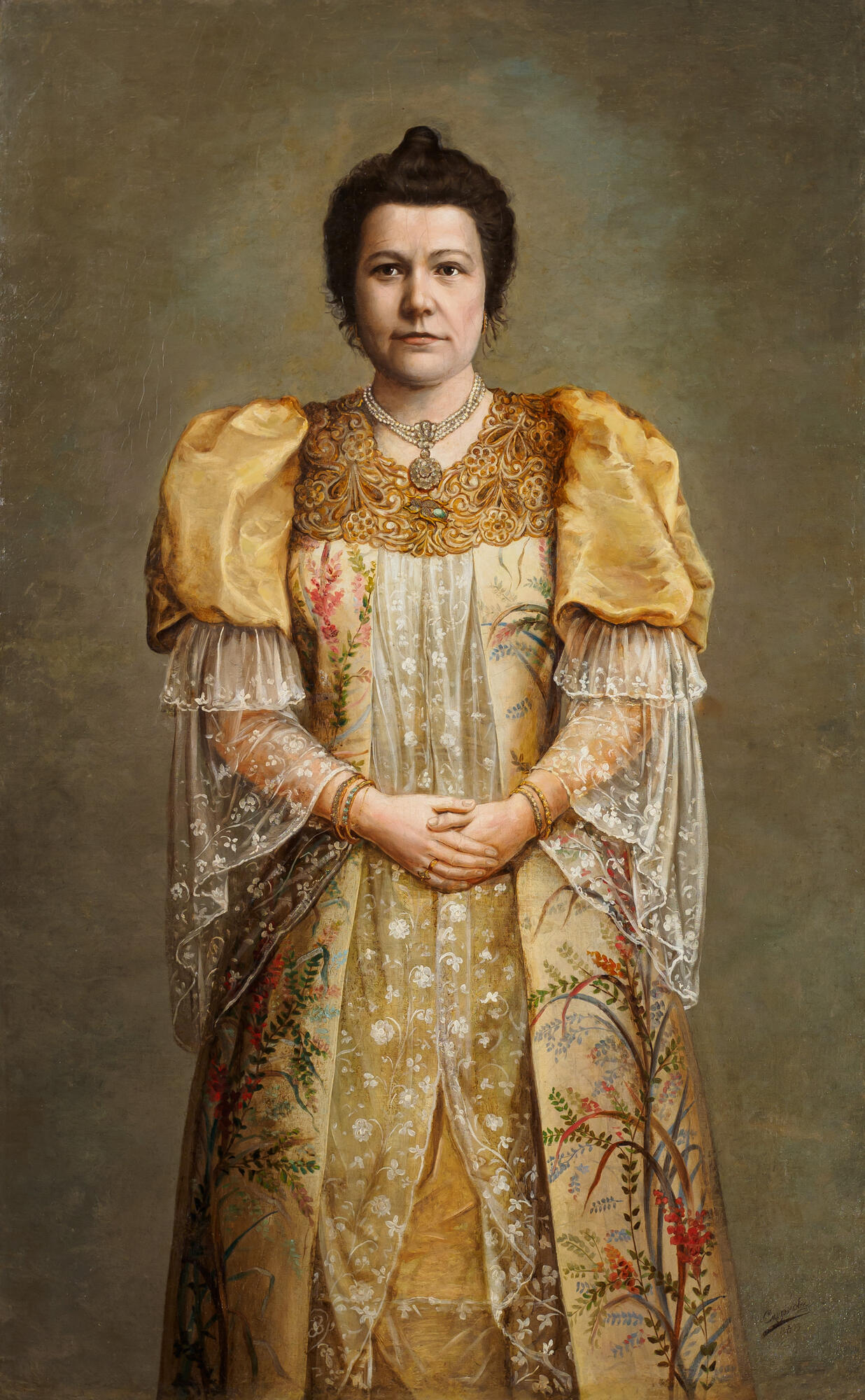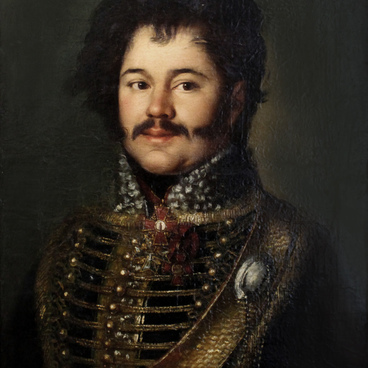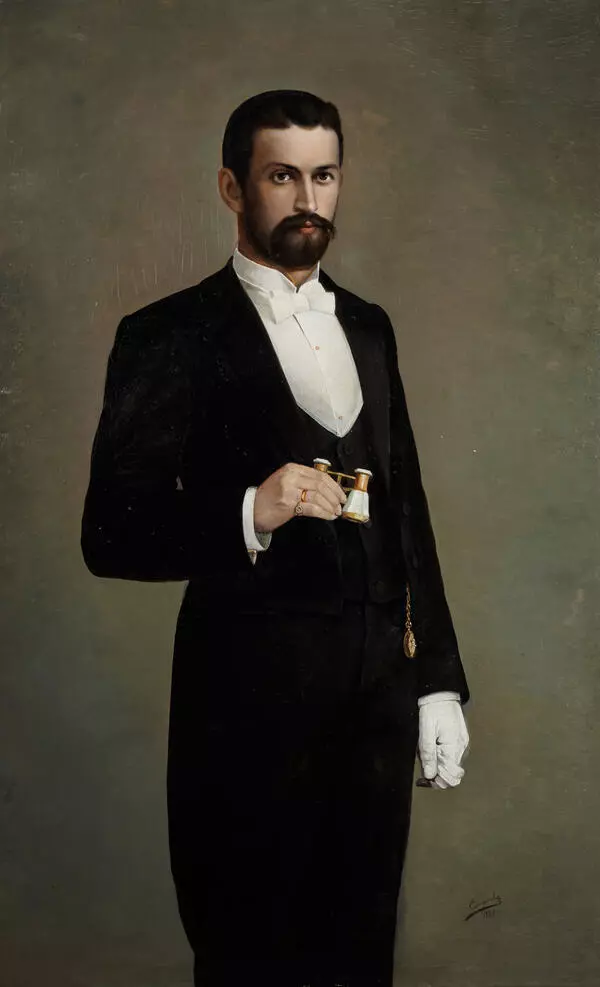The Uglich Museum houses a picturesque portrait of one of its first donors, the citizen Yelena Alexandrovna Bashilova.
Yelena Bashilova (née Pivovarova) belonged to the local elite, was a notary’s wife and a wealthy house owner. She participated actively in public life, fundraising, and the anti-tuberculosis campaigns “The White Flower”. She also helped the newly established museum which inventory books contain records of her numerous donations. Apart from this portrait, a photograph taken at the turn of the 20th century has been preserved. In that photograph, Yelena Bashilova was depicted at a charity event of the city community wearing an elegant white dress and a wide-brimmed hat.
There is little information about the couple’s life after the revolution of 1917. According to some sources, Bashilov served in various organizations for some time — apparently, his experience with documentation management came in handy. However, soon his traces disappeared. Yelena Alexandrovna was forced to leave her house and reside somewhere on the edge of the city. Due to her new life circumstances, the previously wealthy woman could no longer donate documents from her husband’s office and old portraits but had to sell them to the museum at low prices.
There were stories about Yelena Bashilova visiting her former house and scaring children when she walked along the corridors of the newly organized collective house. She used to reminisce about riding a carriage and giving out silk embroidery thread. A woman who used to live there as a child and later became a teacher remembered that she saw Bashilova touching the walls and searching for the door to her husband’s office that “needed to be closed”.
In the 1920s, a movie was filmed in Uglich. It was dedicated to the new reality, the first bus on the streets of a “godforsaken town”, the disgrace of the “vestiges of its dark past” and the strong beginning of a “new life”. Older residents reminisced that “the old woman Bashilikha” (as she was referred to in the city during that time) was an extra in a crowd scene, but since only fragments of the movie have been preserved, it is impossible to recognize the changed face of one of the prominent citizens among other passers-by.
For a long time, the portrait of Yelena Bashilova was stored in an attic. When it entered the museum, it had numerous defects and an extensive network of cracks. Luckily, the face of Yelena Bashilova and the upper part of her dress have been well preserved. However, restoration artists still had to reproduce or reconstruct certain details.
Yelena Bashilova (née Pivovarova) belonged to the local elite, was a notary’s wife and a wealthy house owner. She participated actively in public life, fundraising, and the anti-tuberculosis campaigns “The White Flower”. She also helped the newly established museum which inventory books contain records of her numerous donations. Apart from this portrait, a photograph taken at the turn of the 20th century has been preserved. In that photograph, Yelena Bashilova was depicted at a charity event of the city community wearing an elegant white dress and a wide-brimmed hat.
There is little information about the couple’s life after the revolution of 1917. According to some sources, Bashilov served in various organizations for some time — apparently, his experience with documentation management came in handy. However, soon his traces disappeared. Yelena Alexandrovna was forced to leave her house and reside somewhere on the edge of the city. Due to her new life circumstances, the previously wealthy woman could no longer donate documents from her husband’s office and old portraits but had to sell them to the museum at low prices.
There were stories about Yelena Bashilova visiting her former house and scaring children when she walked along the corridors of the newly organized collective house. She used to reminisce about riding a carriage and giving out silk embroidery thread. A woman who used to live there as a child and later became a teacher remembered that she saw Bashilova touching the walls and searching for the door to her husband’s office that “needed to be closed”.
In the 1920s, a movie was filmed in Uglich. It was dedicated to the new reality, the first bus on the streets of a “godforsaken town”, the disgrace of the “vestiges of its dark past” and the strong beginning of a “new life”. Older residents reminisced that “the old woman Bashilikha” (as she was referred to in the city during that time) was an extra in a crowd scene, but since only fragments of the movie have been preserved, it is impossible to recognize the changed face of one of the prominent citizens among other passers-by.
For a long time, the portrait of Yelena Bashilova was stored in an attic. When it entered the museum, it had numerous defects and an extensive network of cracks. Luckily, the face of Yelena Bashilova and the upper part of her dress have been well preserved. However, restoration artists still had to reproduce or reconstruct certain details.



